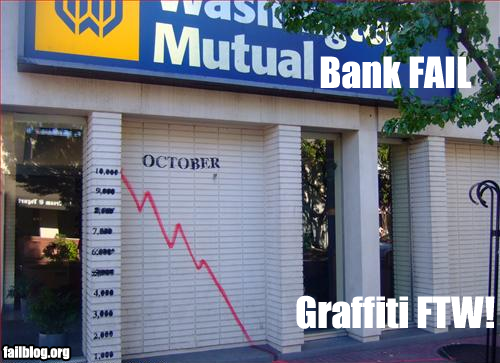From retirees to new college students, a frightening truth is becoming painfully evident in America, one that dominates the country regardless of race, gender, age, or economic status: the blatant deficiency of substantial or even elementary financial literacy.
What IS financial literacy, exactly?
According to an article from LOMA.org, one problem with improving financial literacy is defining the term. One formal definition of personal financial literacy is the ability to read, analyze, manage, and communicate about the personal financial conditions that affect material well-being. Financial literacy includes the ability to discern financial choices, discuss money and financial issues without (or despite) discomfort, plan for the future, and respond competently to life events that affect everyday financial decisions, including events in the general economy.
As we learned from the recent financial meltdown in the United States, American financial issues are not limited to American soil; disasters in the markets at home can and do echo across financial markets throughout the world. The US dollar remains the world’s foremost reserve currency, meaning the majority of US notes are actually held outside of the United States. Economists believe this actually helps protect us against severe depreciation of the dollar, though the tide may be turning with the strength of the Euro and the concern brought about by recent US economic troubles.

And that doesn’t even begin to address the issue of inflation and dollar weakness in global markets:
Regardless of fluctuating dollar values and turmoil in US markets, the reality here is that Americans are, as a whole, in the dark when it comes to how money works, retirement, debt, and the economy in general. Sure, it’s easy to understand that we’re facing a rough patch when CNN shows a plummeting red line and stockbrokers in tears on the floors of Wall Street or when you’re unceremoniously handed a pink slip on some random Friday, but how many Americans actually understand how to shape their financial futures?
The statistics are both sad and scary.
The word from the AICPA on the issue is not only crystal clear but incredibly disheartening:
Americans spend $1.22 for every $1 they earn, according to the U.S. Department of Commerce Bureau of Economic Analysis;
More than one-third of Americans report they do not use a budget to manage their familys expenses.
Fifty-five percent of American workers have no idea how much they will need to save to make their retirement dreams a reality.
America is the richest country in the world, yet, ironically, we have the highest percentage of people living paycheck to paycheck. A recent study from ACNielsen revealed that about one in every four Americans say they don’t have any spare cash.
Social Security only covers 40% of the retirement expenses for the average American.
The average American household with at least one credit card carried a balance of $7942 in 2000.
Young Americans have it even worse. New grads exit college $20,000 in the hole, on average, and are inheriting an increasingly disturbing federal deficit that as of the date of this article was $10,624,730,227,798.25 and growing larger every day. That means every man, woman, and child in the United States owes nearly twice the average yearly salary of employed US workers!
Generation X, raised on Reaganomics, has been dubbed “the bitter generation” by Bernard Salt, demographer and partner at KPMG. Their successors, Generation Y, now in their mid 20s and early 30s, are even worse off and beginning to feel the crunch – raised with a “Me First” mentality in an abnormally overprotective bubble in comparison to earlier generations, fewer than 25% of Gen Y has even the most basic understanding of finances. While the financial landscape evolves and the dollar continues to weaken against rising housing, health care, and energy costs, financial literacy programs remain obscure and tailored towards financial professionals.
So how do we turn the tide?
There are plenty of ways to get involved. The first and most obvious is to educate yourself. The Federal Reserve is the only place in the United States where money (at least figuratively) grows on trees; unless you’re one of the owners of the Fed, you’re going to have to earn yours the good old way.
If you are a parent, educate your children. I cannot stress how important this is (especially having been raised on the borderline of the Gen X/Gen Y financially illiterate contingent). Every parent wants to equip their child with a tool belt full of skills necessary to live a long, healthy, and prosperous life. Sadly, financial literacy is often neglected, even by the most well-meaning parents. It is critical for the health of our future economy and the happiness of our children that parents take the initiative and start early! Teach your children to save those dollar bills from the tooth fairy, let them make selections in the store based on a certain predetermined amount they are allowed to spend, and most importantly, set an example! A child who grows up in a home with a budget (even if money is tight) will be more likely to use one of their own in adulthood.
The AICPA also has some great suggestions for CPAs and finance professionals looking to help spread the word about financial literacy
You can also take a look at some of these helpful websites:
360 Degrees of Financial Literacy (by the AICPA)
Feed the Pig
Get Rich Slowly
U.S. Financial Literacy and Education Commission‘s mymoney.gov
Many State Societies of CPAs and other accounting organizations also have resources or programs available including free CPE, downloadable brochures, and volunteer opportunities.
It is not too late to raise a generation of money-savvy young people and to educate the masses. Financial literacy is now more critical than ever to not only the success and happiness of ourselves, but for the greater whole of our nation and the world.
Categories